History – Plum Beach Lighthouse
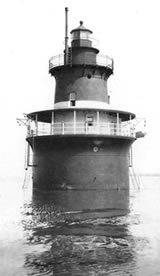
Construction on the Plum Beach Lighthouse was begun in 1897 by contractors using the “pneumatic caisson” method which was considered cutting edge technology at the time. This was achieved by dropping the caisson in the water down to the bay’s floor, then pumping out the water which was replaced
by concrete. The lighthouse was then built upon the newly hardened concrete. Granite rip rap was then placed underwater around the base of the caisson for support. When the lighthouse was first built, it was simply protruding from the water.
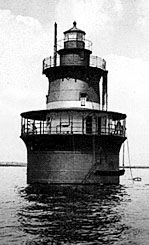
The addition of the Granite Base
After its completion in 1899, the Plum Beach Lighthouse went to work as an aid to navigation, protecting ships from the Plum Beach shoal. This USCG depiction shows the lighthouse prior to the addition of the visible granite rip rap added to its base after the winter of 1918.
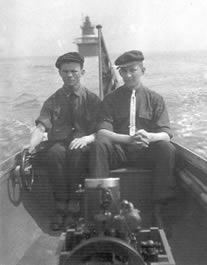
Narragansett Bay froze that winter to the point where automobiles and carriages were able to safely cross. The shifting of the thick ice caused the lighthouse to crack in several places, and when it was repaired in 1922, additional granite rocks were added to protect the structure. Since the repair, the lighthouse has looked like it sits on its own island, when in fact, the “island” is actually protective rocks placed around the substructure of the lighthouse.
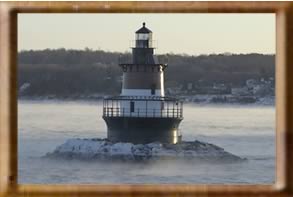
Whale Rock Lighthouse
The hurricane of 1938 brought the lighthouse its most compelling story. John Ganze, the keeper at the time, was on duty the day of the storm and had been visited at the lighthouse by Edwin Babcock, a substitute keeper. As the storm began to approach, Babcock tried to row back to shore, but the conditions deteriorated quickly and he returned to the lighthouse. As the storm intensified, the bay waters began to rise.
Ganze and Babcock found themselves scrambling to the next level, then the next. Finally, at the lantern and fog bell level which is the fourth level of the lighthouse, conditions got frightening, the wind and water whipping and smashing the structure. Ganze and Babcock lashed themselves to the clockwork of the lantern which centered the fourth level. They rode out the storm and waited two days to be rescued. But they were lucky. When they looked south from the Plum Beach Lighthouse, missing from their view was the Whale Rock Lighthouse at the mouth of the bay in Narragansett. It had disappeared along with its keeper, Walter Eberle, never to be found.
Lighthouse in the 1970s
Once the lighthouse was abandoned after the completion of the Jamestown Bridge in 1941, she was left only to the pigeons, seagulls, and cormorants. Little was done to protect the lighthouse until the mid 1970s when an attempt was made to paint the structure. Because of the amount of bird droppings in the building, the painting effort ceased after one of the workers became ill from the effects of the guano. A lawsuit from the worker, James Osborn, forced a dispute of ownership between the federal and state governments, and was eventually settled in 1998 with the state of Rhode Island assuming the deed to the lighthouse. Several interested parties came forward with plans to buy and move the lighthouse, and upon hearing this, Shirley Silvia of Portsmouth, RI formed the Friends of Plum Beach Lighthouse in an effort to keep the structure intact.
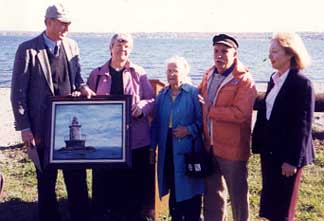
Plum Beach Lighthouse Deed
In 1999, after years hard work, the Friends of Plum Beach Lighthouse received the deed from the State of Rhode Island.
In a ceremony held at Plum Beach, the Friends’ President and founder Shirley Silvia accepts the deed from DEM Director Jan Reitsma. Also seen in this photo are board members Dot and George Silva, and Friends vice-president Alda Kaye.
